Prebiotics vs Probiotics What Is the Best Approach?
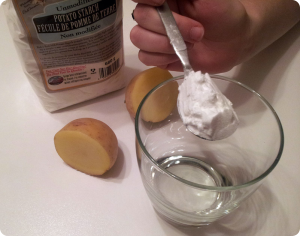 Maintaining a healthy intestinal microflora is one of the key components of a good preventive care program. In fact, even treating some conditions can be achieved by restoring the beneficial gut bacteria. Most probiotic treatments don’t even target restoring the gut bacteria; they just use the microorganisms for temporary relief. The relief is amazing in most cases, and with minimal side effects.
Maintaining a healthy intestinal microflora is one of the key components of a good preventive care program. In fact, even treating some conditions can be achieved by restoring the beneficial gut bacteria. Most probiotic treatments don’t even target restoring the gut bacteria; they just use the microorganisms for temporary relief. The relief is amazing in most cases, and with minimal side effects.The problem with this approach is that once the bacteria in the probiotic supplement are gone, the condition will reoccur. The vast majority of the probiotic supplements on the market contain transient only microorganisms; this means that they cannot colonize the intestine. Some of them are not part of our normal microflora, so they simply cannot live in our gut.
On the short term, taking a probiotic supplement is absolutely the best course of action; it targets with precision the condition, it has the fastest results, and it has the least side effects. However, on a long term you would probably want to get rid of the supplements. This means you need to start restoring your natural intestinal microbiota to its original composition and numbers. For some people, this might be impossible, depending on health issues, age, and lifestyle. For those who want to live healthy and to not rely on supplements, the approach is to feed the bacteria in your guts. This is achieved by ensuring a healthy dose of prebiotics in our daily diet.
Prebiotics and Prebiotic Types
Prebiotics are food ingredients, non-digestible, that promote the growth and well being of the intestinal microbiota. They are not digested, hence pass the small intestine intact, and they feed the beneficial bacteria in colon. They are also known as soluble fiber, although not all prebiotics are soluble fiber. More about fiber here…
There are a few types of prebiotics, the most notable ones are inulins, fructo-oligosaccharides, galacto-oligosaccharides and beta glucans. Soluble fiber is the most common name of non-digestible prebiotic sugars.
One of the most recent discoveries points to resistant starch as a great prebiotic. There is not enough research to fully understand the relationship between resistant starch and microflora, but there is enough research and anecdotal evidence to point it as one of the most powerful prebiotics.
What Is Resistant Starch
Resistant starch is called so because it is not digested, it resists stomach acids and bile, thus passing the stomach and small intestine unchanged. It is also called indigestible starch in the medical world. It’s also called the third fiber, alongside soluble and insoluble fiber. In many ways, it acts like the soluble fiber, but is also brings some of the benefits of insoluble fiber. On the other hand, the regular starch is very rapidly digested and absorbed, providing our body with a boost of energy in a short time. Resistant starch, because is not digested by our body, does not provide us any energy. The fantastic thing about it is that it feeds gut bacteria, like soluble fiber. Although there is little research in the field, it looks like the prebiotic effects of resistant starch are a little different than other prebiotics. Indigestible starch is very rich in Amylose, which is a polysaccharide that is very hard to digest, because our enzyme cannot break them down in the small intestine.
There are four types of resistant starches:
- the type found in legumes, and seeds, RS1
- the type found in some raw foods, such as green bananas and raw potato, RS2
- and resistant starch obtained through cooking and cooling rich-starch foods, (potatoes, rice, and pasta).
- The fourth type is chemically modified starch in order to render it non-digestible.
OK, some of you might think, “another type of fiber, another prebiotic on a long list, what’s so exciting about it, and what’s with all the hype around resistant starches?” That’s what I initially though too. There are a few facts that might change your mind, and convince you that this is huge, and the more prebiotic types we find the better we can improve our health.
First of all, resistant starch is great because the major side effect with any soluble fiber, (that is gas), is not as bad.
Secondly, because of this, we can afford to get higher doses of it, hence getting some fantastic results.
The strongest argument though, is that there seems to be a qualitative difference between different types of prebiotics. This difference might stem from the fact that different bacteria reacts differently to prebiotics. Some will feed better on inulin type of fructans, some will feed better on resistant starches, and some will prefer galacto-oligosaccharides.
We can conclude that in order to maintain a healthy and balanced microbiome we need to get enough of all types of prebiotics. Our microbiome is pretty amazing, there are various interactions between the various bacteria and yeasts in our gut. A small imbalance in the numbers of various colonies, and homeostasis is interrupted. The latest scientific studies show that gut health needs to be assessed by looking at the complete microbial ecosystem, and not just separate colonies.
One very interesting property of resistant starches is that it stimulates the production of butyrate, and this production is significantly higher than with other prebiotic types. Butyrate is a short chain fatty acid, with an essential role in the intestinal health. Butyrate producing bacteria will literally thrive while feeding on resistant starches. A great article is Resistant starch and “the butyrate revolution” which treats the latest discoveries on the subject. Although butyrate producing bacteria can feed on by-products of other microorganisms, the quantity is considerably lower. Here is another article that demonstrates that out of several prebiotic types, the most efficient for butyrate production were resistant starch and short chain FOS.
Resistant Starch Foods – A Comprehensive List
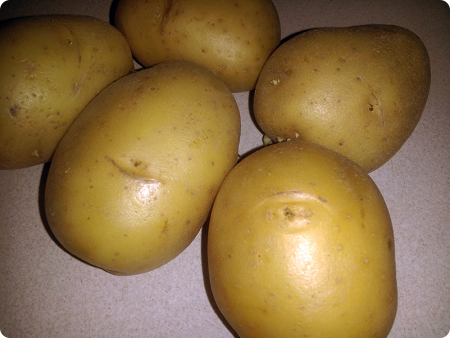
Because resistant starches are of four types, it might be possible that eating one type to benefit you more than others. There is no research on this; in fact the resistant starch food revolution is just beginning. Eat foods from all three types of RS.
Here is a list with the most common foods containing decent amounts of resistant starches.
LiveKuna Organic Plantain Flour
Raw plantain flour is a great soure of resistant starch. Many people do not tolerate green banana flour, but they love plantain flour. This is probaly the best source of RS2 type resistant starch. Starch from raw potato is easier to dose than this flour, and people love it for its lucid dreams inducing capabilities, but plantain flour is safer to use, and better.
A great benefit of this product is that it causes less gastrointestinal discomfort than other resistant starches. I also love the texture of it in my smoothie.
No other additive in the flour, just pure plantains. The best thing is you can use this for baking, and it’s great in any gluten free recipe. LiveKuna’s plantain flour is organic.
- Bread, almost all types of bread contain a decent amount of resistant starch
- Cereals contain some nod-digestible starch, but less than bread, with puffed wheat and corn flakes on top of the list
- Corn products contain decent amounts, and depending of the processing, corn products can be a great source of fiber. Interestingly, polenta, one of my favorite foods, is under average. Once cooled, the content raises to above average.
- Beans are among the best sources of resistant starch. Even after cooking, legumes and beans retain a lot of it. If you cool them after cooking you can increase even more the amount, so think about bean salads.
- Nuts are another great resistant starch source, with cashews on top of the list, and the humble peanut averaging a decent amount raw or roasted, (yum).
- Ripe bananas have very little non-digestible starch, but green bananas are a great source of RS2, for those who tolerate them. If you can’t eat unripe bananas, try green banana or plantain flour, it’s one of the richest sources of indigestible starch. You can add a little in your shake. If you cook it though, a lot of the indigestible starch will turn into the regular one.
- Potatoes are maybe the most common source of any sort of starch, and raw potatoes are very rich in “the third fiber”. We can’t eat raw potatoes, because they contain toxins, and when we cook them a lot of the amylose is transformed into digestible starch. However, eating unmodified potato starch is a great way to get the extra dietary need. Even if cooked, potatoes retain a lot of the dietary fiber. If we allow them to cool down, the starch will undergo retrogradation, which will increase the total content of fiber with type 3, (RS3), resistant starch. Cooked and frozen for 30 days potatoes will have a considerable amount of RS.
- Most of potato-like vegetables contain a lot of RS. Some of these starch rich vegetables are sweet potatoes, tapioca, taro, yam, cassava.
Warning: there are some discussions about RS2, and the Internet trend of supplementing with large quantities. Raw resistant starch, RS2, as in raw potato starch, or green banana/plantain starch is good in moderation, and only temporary. See the side effects section for more information.
Judee’s Unmodified Potato Starch 2.5 lb
Judee’s potato starch is raw and unmodified, exactly how you need it as a prebiotic. Raw potato starch contains RSII type starch, as classified in the Advances in Nutrition Journal(link is external).
There aren’t many sources of RSII, and you can’t eat raw potato, so this is probably one of the best forms available, along with green banana flour.
There are no additives, or fillings in this product. If you are eating it raw, calories are not of concern because most of the raw starch doesn’t get digested. It goes straight into your intestine, feeding your microbiome….
The Best Resistant Starch Sources
Foods High In Resistant Starch
If you want to be able to get a lot of resistant starch in your diet, without measuring, or over thinking, just look at these foods/extracts that are extremely rich:
- Cashews
- White beans, Black beans, red beans,
(http://www.ncbi.nlm.nih.gov/pubmed/9137637) - Lotus seeds
- Plantain/banana flour, (don’t cook it)
- Cassava starch
- Mungbean starch
- Potato starch, (uncooked), (use it only temporary, as all RS2 starches)
- Cassava
- Hi-Maize Corn Starch
- White bread frozen for 30 days
- Cooked potatoes frozen for 30 days
The Healthiest Resistant Starch Foods
The beans are the missing ingredient in our diet. Beans contain RS1 which by cooking turns into RS3, so you will get some RS1 and more RS3, when you cook beans. But you also get inulin along with the starch. Beans are known to get you gas, this is because of the high amount of soluble fiber.
 Nutrition: The Resistant Starch Bible:
Nutrition: The Resistant Starch Bible:
If you want to need more about resistant starch, this is a great book, that goes into great details, and helps you identify foods that naturally contains it. The book is a great resource for those who want to improve their intake of indigestible carbohydrates, and understand how resistant starch works in your body. The subject is not a trivial one, yet Chase Williams, the author, manages to present it in a form that is easy to understand.
Health Benefits of Resistant Starch
As mentioned before, we are tempted to dismiss RS as just another fiber trend. We have enough fiber from other foods, we might think, and we don’t need another must have in our diet. However, the research about resistant starch is compelling, and there is huge health benefits associated with consuming it.
- It helps with insulin sensitivity.
- Improves digestion.
- It helps to keep low insulin and glucose levels after meals.
- It stimulates bacteria to produce butyrate. Other prebiotic fibers can also stimulate butyrate producing bacteria, but they are not as efficient.
- Since it stimulates butyrate production, it is a great help for people suffering of IBS, and ulcerative colitis. It also helps with constipation.
- The same butyrate is involved in apoptosis, hence it reduces the chances of colon cancer.
- Because it stimulates gut bacteria, it boosts immunity.
- It helps with weight control by providing a better satiety. The mechanisms are complex, but the effect seems to be as a result of gut hormone stimulating.
- It lowers cholesterol and blood fat. Short chain fatty acids, such as propionate, butyrate, and acetate, can decrease the production of new fat cells.
- Resistant starch also helps with liver health.
- Reduces inflammation, so it can help with eczema, arthritis, and any autoimmune diseases.
- There is some evidence that RS can help SIBO sufferers. This is explained by the ability of RS to trick bacteria in the small intestine to adhere to it. Once trapped into the starch, bacteria are evacuated from the small intestine.
The list of health benefits is a lot longer, this is a truly amazing fiber, and you should start getting more in your diet now.
How to Take Resistant Starch
If you don’t know how to increase your dietary intake, just grab a bag of unmodified potato starch, from raw potatoes, and take two tablespoons per day. That should be enough. Start with a teaspoon, and gradually increase your dose up to two tablespoons per day. Do not start with large doses, or you will suffer, read the side effects for more info.
Some people take it as is, but most of us don’t like it that way. Many people take it in a glass of water, and they find it OK like that. I personally like it with a fruit and yogurt smoothie, and I add a little honey, (another type of prebiotic). Most of the times I combine it with acacia fiber (gum Arabic from acacia Senegal). However, if you just started with soluble fiber, you should probably avoid mixing them, or take a very low dose, until your body adjusts to it. This could take up to 6 weeks, but it could be as fast as one week.
Side Effects of Resistant Starch
The most common side effect with any soluble fiber is gas. Although resistant starch is one of the least gas forming fibers, the reaction could be serious, with larger quantities ingested. Combine that with constipation, and it’s going to be a nightmare.
There have been some anecdotal reports of autoimmune side effects due to RS. Although this is not documented by the scientific world, we can’t ignore it. I suspect it is just a temporary condition.
Too much RS could reduce the diversity of the gut microbiota, by selectively feeding bacteria. Not all microbes in our gut love RS.
WARNING: There is a serious danger to kill good bacteria by taking too much RS2, or taking it for too long. RS2, as in raw potato starch, and green banana flour, selectively feed bacteria. These bacteria will outgrow other important strains in our body, leaving us without important probiotics.
Lucid Dreams with Resistant Starch
One cool side effect reported by many, is the lucid dreams. With larger quantities of RS, people experience very interesting, life-like, vivid dreams.
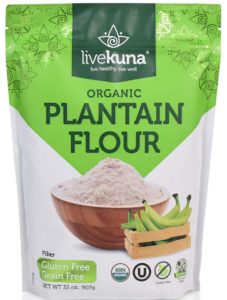
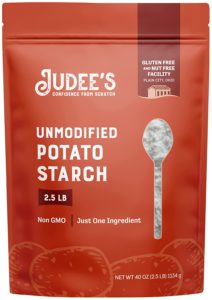
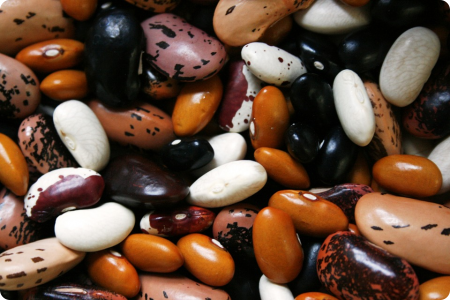
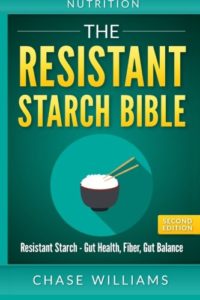
Prebiotics
Very thorough article. Thank you.